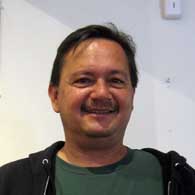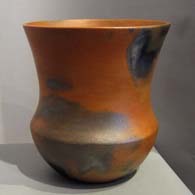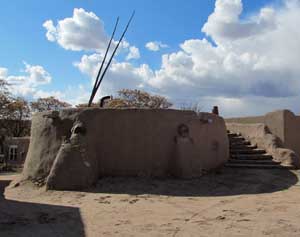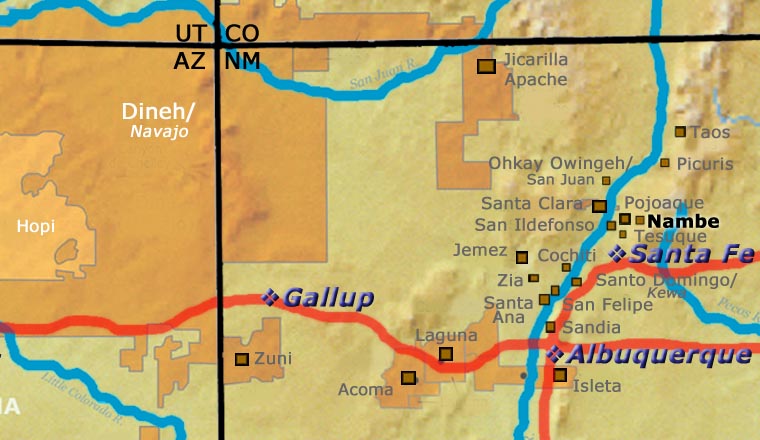
Robert Vigil
Nambe

Half Nambe Pueblo and half Non-Pueblo, Robert Vigil was born to parents Joe and Alice Vigil in 1965. He first learned the method of making pots with clay coils while in high school in Texas. Then he returned to the pueblo and began to learn from folks like Virginia Gutierrez, his cousin Lonnie Vigil and then from Juan Tafoya of San Ildefonso Pueblo.
Robert has been active as a Nambe potter since 1990 working with micaceous jars, bowls, vases, figures and polished redware. Robert doesn't create giant storage jars like his cousin Lonnie as he much prefers to work on a smaller, more intimate scale, and coloring his micaceous pots with fire clouds and other variations produced by the reduction method of firing. There is an elegant purity to his simplistic and understated forms, a deep reflection of his soft spoken manner and gentle spirit.
Robert has told us he prefers the simple shapes and forms and even his carving is gentle. He gets his inspiration from the clay: "I just sit down and start and the clay forms itself through my hands." He's lately been teaching others at his pueblo how to make pottery the traditional way as he doesn't want to see that tradition get lost over time.
He has participated in shows at the Wheelwright Museum of the American Indian, at the Eight Northern Pueblos Arts and Crafts Show and at the First Micaceous Pottery Market in 1995 in Santa Fe.
Pieces of Robert's pottery are on display at the Minneapolis Art Institute in Minneapolis, MN, and at the Crocker Art Museum in Sacramento, CA.
100 West San Francisco Street, Santa Fe, New Mexico 87501
(505) 986-1234 - www.andreafisherpottery.com - All Rights Reserved

Nambé Pueblo

The main kiva at Nambé Pueblo
The area that is now Nambé Pueblo was likely settled in the 1300s CE after groups of Ancestral Tewa had made their way east from the Mesa Verde area to the San Luis Valley. From there they journeyed down the east side of the Rio Grande to the Nambé River basin. There, they traveled up streambeds and into the high country to settle, coming down to the lower Nambé River valley only in the summer to grow their crops. Eventually, they felt safe enough to stay in the lower valley year round and abandoned the higher mountain villages.
By 1600 CE, Nambé was a primary economic, cultural and religious center in the Tewa Basin (the valley of the Rio Grande between the Rio Grande Gorge and White Rock Gorge). Nambé's relative "wealth" attracted a large Spanish presence and the nature of that presence caused the Nambé people to join wholeheartedly in the Pueblo Revolt of 1680.
The Spanish returned in 1692. Their rule was a bit less harsh, however, the Spanish brought the first horses (and other domesticated livestock) into the New World and as the number of Spanish settlers increased, so did the number of wild horses. More horses brought more raids from the Utes, Navajos, Apaches and Comanches as they came looking for whatever they could carry away. The worst of the raiders, the Comanches, were finally subdued by Governor Juan Bautista de Anza in 1776 but by then, the impact of European diseases was overwhelming the people of Nambé. A smallpox epidemic in the late 1820s virtually ended the pueblo.
The Nambé pottery tradition is similar to that of Taos and Picuris in their use of micaceous clay slips but, like other villages in Tewa Basin, Nambé potters also used to produce white-on-red and all-black products, too. When Lonnie Vigil began producing his micaceous clay masterpieces in the 1990s, he almost single-handedly jump-started the revival of pottery making at Nambé.
100 West San Francisco Street, Santa Fe, New Mexico 87501
(505) 986-1234 - www.andreafisherpottery.com - All Rights Reserved
